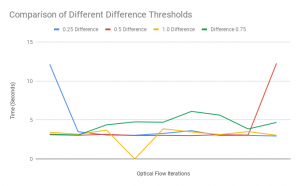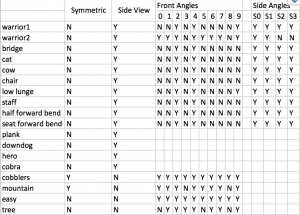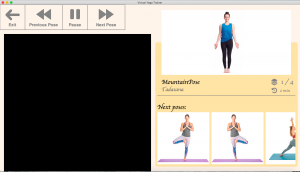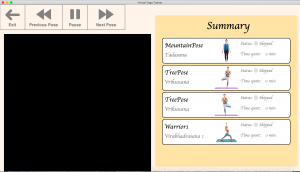Team Status 04/27
Risks and Contingency
Our biggest risk at this point is unfavorable demo conditions, such as insufficient lighting. We will be addressing this with additional light sources. In addition, we need to ensure that we can properly articulate the engineering behind our project, so we are developing an engineering routine to showcase this during the final demo.
Schedule Changes and Updates
This week we will be conducting some user testing results but will have some initial results for our presentation this week. Otherwise, we are on track.
Sandra’s Weekly Status
Accomplished Work
This week I wrapped up my runtime testing for Open Pose, Pose Comparison + Verbal Instruction Generator, and the Overall Application. My results are outlined below and will be included in our report. In addition, I started to work on the slides for the final presentation this week and updated a number of diagrams. I began some work outlining what we need to complete for the final report.
Upcoming Deliverables
Next week, I will be finishing up the presentation, poster, and report.
Chelsea’s Weekly Status
Accomplished Tasks
This week I removed the level buttons since we don’t need it anymore. I worked on adding the demo page for the engineering demo that consists of a frame showing what we print out in terminal, so that we could demonstrate the backend of the project. I also changed the routine page to include a label that would show users the instructions.
Deliverables I Hope to Accomplish Next Week
I hope to finish some user testing (we are currently thinking 3 tests for each of us) and start working on the poster and report.
Tian’s Weekly Status
Accomplished Tasks
- Implemented the overall scoring for user poses. We define for each pose several important angles. The score is calculated as the number of correct angles over the total number of important angles.
- Did preliminary user testing with two participants. I let 2 participants observe me doing the entire yoga routine using our application and collected feedback from these participants. For each instruction given by our application, the following few questions were asked:
- Does this instruction make sense to you?
- Do you think this instruction is expressive enough for the current situation?
- Do you think this instruction has appropriate length and pace?
- Do you think this instruction is helpful in actual practice?
- Completed the draft of final presentation slides with Sandra and Chelsea.
Deliverables I Hope to Complete Next Week
- Refine our application based on one more round of user testing
- Design the poster with Sandra and Chelsea





